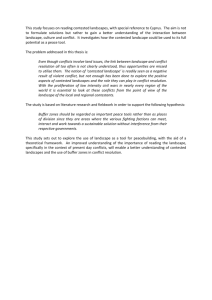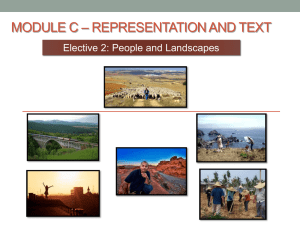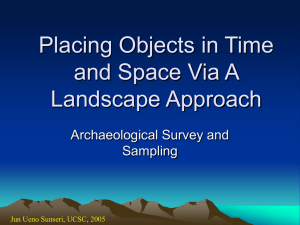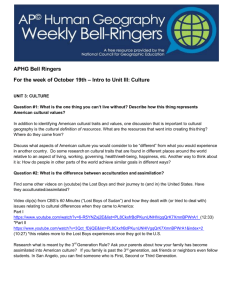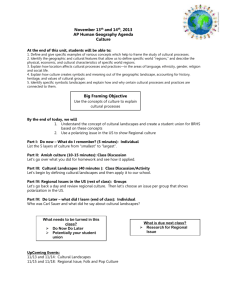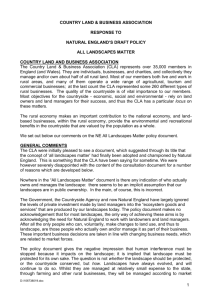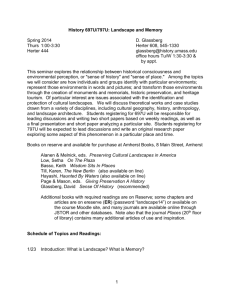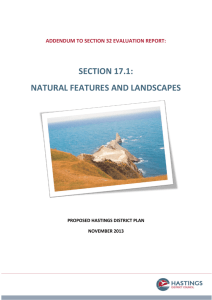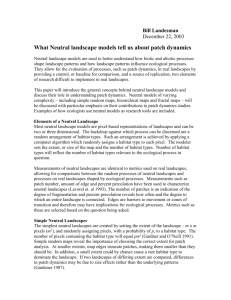Introduction to Indigenous People & Colonizing Groups & Settlements
advertisement
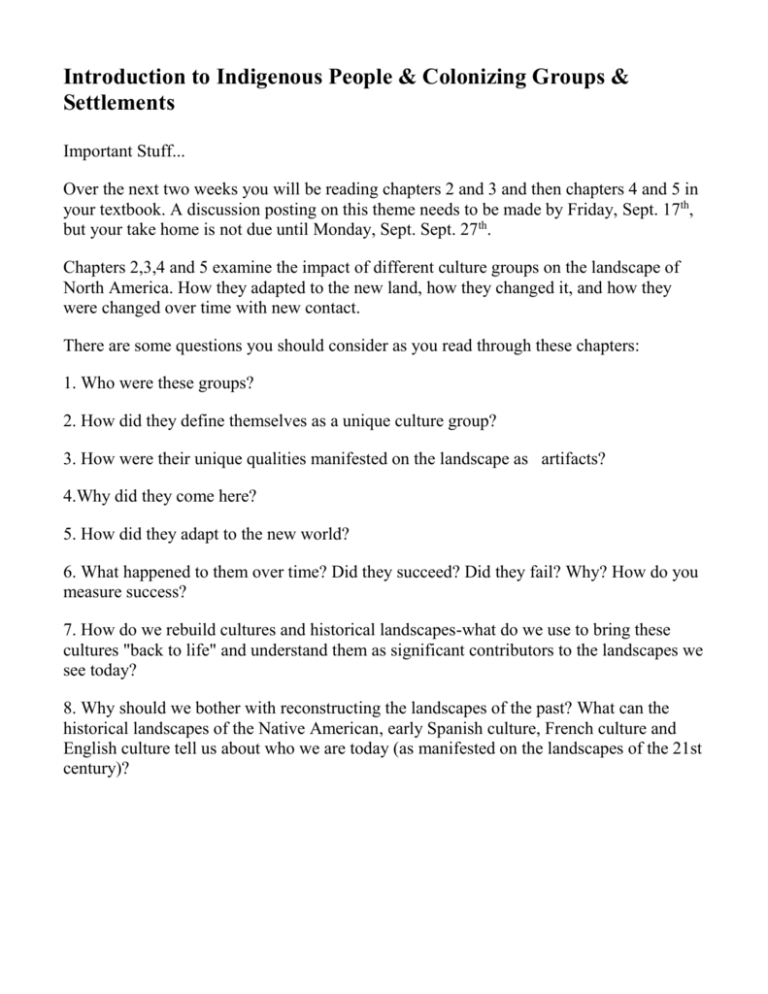
Introduction to Indigenous People & Colonizing Groups & Settlements Important Stuff... Over the next two weeks you will be reading chapters 2 and 3 and then chapters 4 and 5 in your textbook. A discussion posting on this theme needs to be made by Friday, Sept. 17th, but your take home is not due until Monday, Sept. Sept. 27th. Chapters 2,3,4 and 5 examine the impact of different culture groups on the landscape of North America. How they adapted to the new land, how they changed it, and how they were changed over time with new contact. There are some questions you should consider as you read through these chapters: 1. Who were these groups? 2. How did they define themselves as a unique culture group? 3. How were their unique qualities manifested on the landscape as artifacts? 4.Why did they come here? 5. How did they adapt to the new world? 6. What happened to them over time? Did they succeed? Did they fail? Why? How do you measure success? 7. How do we rebuild cultures and historical landscapes-what do we use to bring these cultures "back to life" and understand them as significant contributors to the landscapes we see today? 8. Why should we bother with reconstructing the landscapes of the past? What can the historical landscapes of the Native American, early Spanish culture, French culture and English culture tell us about who we are today (as manifested on the landscapes of the 21st century)? Major Concepts and Themes for Chapter 2 Chapter 2: Retrieving American Indian Landscapes 1. The "grafting" of Euro-American landscape over the Amerind landscape. 2. The relationship between increased regional differentiation of the physical environment and human ways of life as manifested in Amerind culture. 3. The fragmentation of Amerind cultures as a result of the intensification of European trade, expansion and settlement. 4. The "imprints" of Native American culture on the contemporary landscape. Major Concepts and Themes for Chapter 3 Chapter 3: Refashioning Hispanic Landscapes 1. The role of the presidio, mission and pueblo as a Spanish settlement strategy and its impact on the contemporary landscape. 2. The legacy of Spanish conquest and settlement in the American southwest, particularly in California and New Mexico. Major Concepts and Themes for Chapter 4 1. The development of French settlements in North America, their locations and type ranging from the work camp to the commercial or administrative centers, were tied to an overall strategy for the strengthening of French claims in the New World. 2. Landscape artifacts such as house types, systems of land division, etc. although originally imported from France were adapted for use in the New World to better match their purpose and location. 3. Commercial and administrative centers mirrored more closely the ports and towns of France as the "official conduits" for French traditions, social stratification and culture. 4. The French long lot system of land division although visually homogenous, created untold variety in the rural landscapes of French North America as regional variation and specialization in agriculture developed. 5. Today, the imprint of French influence in North America is found in French place names, major cities, such as Quebec, Montreal and New Orleans, and urban and rural land survey techniques. Major Themes and Concepts for Chapter 5 1. The imprint of geographical ideas and patterns imported from England is visible on contemporary landscapes, although the elements may have been reworked to better suit the needs of today's society. 2. Two major cultural hearth areas were (and are) the focus of many (if not most) of the landscape elements that can be observed across the country today ranging from methods for town design to the individual design and placement of buildings in both the rural and urban areas. These hearth areas are the (1) New England culture region and (2) Pennsylvania culture region. 3. As ideas and systems of design from these hearth areas diffused across the nation, each was adapted for use in new environments and purposes even within national land-division systems, such as the Northwest Ordinance Survey. 4. The adoption, use and diffusion of geographical ideas to new locations is largely a function of the perceived long term purpose of the new settlement and the individual and group "vision" of community. Name:______________________________ TAKE HOME #3 Indigenous People and Colonizing Groups and Settlements 30 Points DUE DATE: Monday, Sept. 27th Required Reading: Chapter 2: Retrieving American Landscapes Chapter 3: Refashioning Hispanic Landscapes Chapter 4: Retracing French Landscapes in America Chapter 5: Americanizing English Landscape Habits Address the following questions in essay form, incorporating examples from the text reading* into your responses: 1. Explain how the Euro-American landscape was “grafted” over the Amerind landscape of North America. 2. Explain the process of the fragmentation of Amerind cultures in North America with the intensification of European trade, expansion and settlement. (How and why did fragmentation occur? What was the result this fragmentation as manifested on the landscape?) 3. Explain the role of the presidio, mission and pueblo as a Spanish settlement strategy. How has this strategy influenced the landscape of the American southwest today? 4. How did the adoption and use of the French long lot system of land division contribute to the development of increased regional variation and specialization in agriculture? 5. Using examples from both the New England culture region and the Pennsylvania culture region explain how the “adoption, use and diffusion of geographical ideas to new locations is largely a function of the perceived long term purpose of the new settlement and the individual or group “vision” of community.” * Include direct quotations and page numbers.


